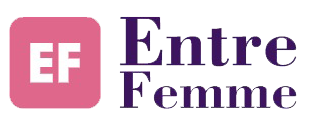The secret to Improve Workplace Communication
Is your workplace communication stuck in a dial-up era of slow, frustrating exchanges?** Emails piling up like unread newspapers? Meetings resembling awkward silences punctuated by nervous coughs? Fear not, fellow warriors of the water cooler! The ancient scroll of productivity has revealed its secret to unlocking stellar workplace communication: Embrace the power of active listening!
- David Parker
- May 13, 2025
- 0 Comments
- 2474 Views
For those embarking on their professional journey or seeking to understand how to communicate effectively, knowing how to make yourself heard is crucial to stand out and tap into potential markets. Not being adept at communication would pose a real challenge in reaching a clientele. In case you didn't know, I am pursuing a degree in software engineering. In this field, coding is undoubtedly essential, but knowing how to communicate, especially to whom is paramount.
I remember in our courses. It was emphasized that knowing how to sell ourselves and say the right things at the correct times to the right people is crucial. In light of all this, I have decided to share some keys that I have studied and used in the professional domain, and I hope they prove helpful to you, too.
Communication in the professional environment is a complex tapestry influenced by many factors. In this modern world where collaboration and interaction are at the heart of success, understanding how individuals communicate is essential for establishing fruitful relationships and fostering a positive work culture.
My exploration focuses on two significant influences shaping professional communication: communication styles and generational preferences. By analyzing these elements, we delve into the fascinating world of human interactions in the professional environment, where each exchange is tinged with emotion, logic, and subtle dynamics. To communicate effectively, we must first understand the existing styles. So, let's start there; there are a total of 10, but feel free to let me know if there are more in the comments.
You can read: Finding Safe Alternatives for Healthy Growth
I- Communication Styles
1. Attached
The attached communication style is characterized by emotional expressiveness and deep engagement. Individuals adopting this style highlight their feelings, expressing their passion intensely. Here, passion is perceived as complete immersion in the conversation, creating dynamic, rich, and participatory communication.
In practical terms, individuals with this style tend to openly share their feelings and express their opinions with intense emotional involvement. Their communication is often marked by a significant personal investment in the discussion, creating a lively and engaging atmosphere. The conveyed passion contributes to a more dynamic and interactive interaction, stimulating deeper and more meaningful communication.
2. Detached
In contrast, the detached style manifests through calm, impersonal communication, emphasizing objectivity. Detached communicators avoid excessive emotional expression, preferring a rational approach. This style prioritizes the clarity of facts over subjectivity, creating an atmosphere of deliberate and thoughtful discourse.
In summary, the detached style is characterized by calm and objective communication, focusing on facts while avoiding excessive emotional expressions. This approach creates an atmosphere of composed and reflective discussion, fostering clarity and rationality in touch.
3. Linear Direct
Linear direct communicators live by the motto, "Get straight to the point." They prefer direct communication, believing that straightforwardness equates to honesty and respect for their interlocutor. This style is centered on efficiency, eliminating detours to get to the message's essence quickly.
4. Circular Indirect
The circular indirect style favors a narrative approach to convey a message. Communicators of this style often let the story tell itself, sometimes leaving the central idea unspoken, trusting verbal and non-verbal information to ensure understanding. This subtle approach creates an artistic dimension in communication.
In other words, communicators of this style prefer using narratives, anecdotes, or suggestions to convey their message rather than expressing it directly and explicitly. They rely on the power of details and contexts to create implicit understanding in their interlocutor. This narrative approach can be perceived as more subtle and creative, adding an artistic dimension to sharing information.
5. Formal
Formal communicators follow strict rules in their exchanges. They are sensitive to cultural norms and adopt specific protocols based on the situation. Formality is a vital characteristic of this style, reflecting a meticulous approach to professional communication.
In other words, individuals who prefer a formal style attach great importance to respecting rules and social conventions in their interactions. Depending on the professional context, they strive to follow specific standards, such as etiquette formulas, appropriate greetings, and other cultural traditions. Formality in their communication reflects a rigorous and conscientious approach to respecting established norms.
6. Informal
In contrast, the informal style is less bound by rigid conventions. It offers greater flexibility in speech and interaction, allowing for more relaxed communication. Everyday communicators may even use first names informally, even in formal settings.
7. Relationship-Focused
The relationship-focused communicator prioritizes preserving group harmony. In this style, task accomplishment takes a back seat to maintaining good interpersonal relationships. This creates a collaborative and cohesive working environment.
8. Task-Focused
In contrast, the task-focused communicator primarily concentrates on goal achievement. Feelings and group harmony are considered secondary to completing assigned tasks. This can result in direct and results-oriented communication.
9. People-Focused
People-focused communicators highlight the importance of individuals in the exchange. They pay great attention to feelings, sometimes making it challenging to separate ideas from people. Communicating with this style requires particular sensitivity to emotions.
10. Idea-Focused
Idea-focused communicators emphasize concepts rather than individuals. They readily accept disagreement on ideas without perceiving it as a personal attack. This creates an environment conducive to open discussion and the clash of ideas.
This diversity of communication styles illustrates the richness of human interactions in the professional environment. Let's now move on to the next step.
II- Reflection
To begin, we will start with a self-assessment of your communication style. Don't worry, and I'll guide you through it. Self-assessment of personal communication style is a crucial step in enhancing communication skills. It's a reflective exercise to understand how we prefer to convey ideas and interact with others. By identifying our dominant style, whether attached, detached, linear, direct, circular, indirect, formal, or informal, we lay the groundwork for more conscious and adaptive communication.
To perform a self-assessment of your communication style, follow these steps:
- Reflection on Past Experiences: Review personal and professional communication experiences. Identify situations where you felt comfortable and effective in your communication, as well as those where you encountered challenges.
- Identification of Preferences: Reflect on your natural communication preferences. Are you inclined to express your emotions openly, or do you prefer maintaining a neutral and objective tone? Do you tend to favor direct and brief explanations, or do you choose storytelling to convey your ideas?
- Analysis of Others' Reactions: Consider the reactions and feedback you've received from others during your interactions. Have they expressed a preference for a particular communication style from you? These observations can provide important clues about your communication approach.
- Use of the Table: Utilize the provided table to mark your communication style preferences. Indicate which style (attached, detached, linear direct, circular indirect, formal, informal) aligns best with your usual communication method
- Identification of Dominant Style: Based on your reflections and markings in the table, identify the communication style that seems most dominant for you.
- Reflection on Necessary Adjustments: Once you've identified your dominant style, reflect on how it has influenced your past interactions. Identify potential adjustments you might consider to enhance your communication skills in different situations.
- Improvement Goals: Develop specific goals to improve your communication style. This could include adjustments in emotional expression, clarity of information, or adaptability to formal or informal contexts.
By conducting this self-assessment honestly and thoughtfully, you will be better equipped to understand your communication style and work towards its continuous improvement. Personally, it has served me well.
1. Reflection on Situations Influencing Style Change
Another type of reflection involves considering pivotal moments in your professional life that influence your communication style. Stressful situations, professional challenges, or significant successes can all shape your communicative approach. Reflecting on these critical moments helps you better understand how your style evolves in response to different circumstances. For instance, a period of intense pressure might push you towards a more detached style, prioritizing objectivity to cope with challenges.
2. Analysis of Challenges with Other Communication Styles and Necessary Adjustments
The diversity of communication styles can sometimes lead to misunderstandings or friction. Recognizing difficulties with other types is the first step toward more effective interpersonal communication. For example, if you struggle with a detached style due to its impersonal approach, it's essential to reflect on necessary adjustments. This might involve working on your ability to remain objective in discussions or express emotions more accurately.
III- Professional Communication Preferences
1. Introduction of communication preferences for different generations
Professional communication is profoundly influenced by the diverse generations present in the workplace. Understanding these specific preferences can greatly ease intergenerational interactions. Here's an overview:
a- Traditionalists (1925-1945)
- Communication Preferences: Prefer face-to-face interactions, formal letters, and in-person meetings.
- Communication Obstacles: May struggle with email norms, cellphone use, and social media.
b- Baby Boomers (1946-1964)
- Communication Preferences: Favor telephone calls, in-person meetings, faxes, and formal emails.
- Communication Obstacles: Might be less comfortable with social media blogging and could have an aversion to new technologies.
c- Generation Y / Millennials
- Communication Preferences: I prefer texting, online social networks, and emails for work or school.
- Communication Obstacles: Might lack enthusiasm for face-to-face conversations, phone calls, and formal writing.
d- Generation X (1965-1978)
- Communication Preferences: Prefer email, mobile phones, texting, and online forums.
- Communication Obstacles: May face challenges in group discussions and encounter barriers with social media.
e- Generation Z / Zoomers
- Communication Preferences: Opt for texting, social media, and a preferred mobile experience.
- Communication Obstacles: Might struggle with formal written communication and face-to-face conversations.
2. Tips for Improving Intergenerational Communication
- Cultivate Understanding: Encourage mutual understanding by providing training on generational differences and highlighting the value of each approach.
- Foster Multichannel Communication: Use various communication channels to accommodate everyone's preferences, combining traditional methods with modern means.
- Intergenerational Mentorship: Facilitate mentorship opportunities between different generations for skill exchange and better mutual understanding.
- Encourage Adaptability: Encourage team members to be flexible in their approach, adapting their communication style based on their colleagues' preferences.
- Promote Open Communication: Create an environment where everyone feels comfortable expressing their communication preferences and needs, fostering open and constructive dialogue.

 | Unlock Success with Our Guide
| Unlock Success with Our Guide



0 Comments